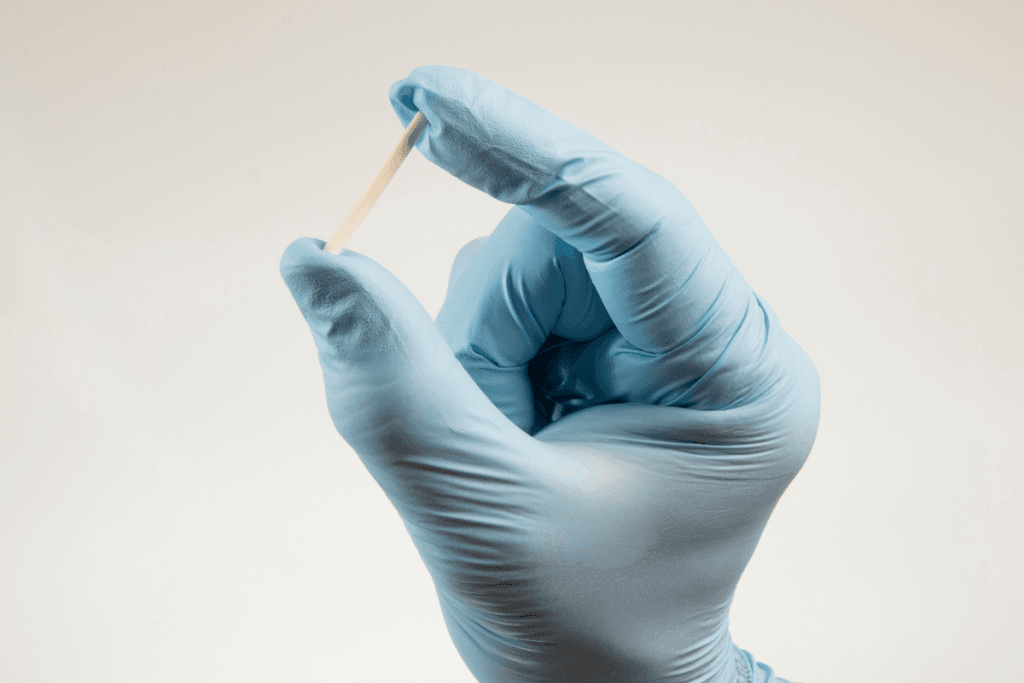According to the Guttmacher Institute, more than 65% of U.S. women of reproductive age currently use some form of contraception, with long-acting reversible contraceptives (LARCs) seeing rapid adoption over the past decade. Among these, the Nexplanon implant has become a leading option for women seeking highly effective, low-maintenance birth control.
This small, flexible rod offers up to three years of continuous pregnancy prevention and has shown an efficacy rate of over 99%, making it one of the most reliable contraceptive methods available. For healthcare providers, understanding the insertion process, removal techniques, safety profile, and patient counseling considerations is critical in optimizing outcomes.
What is Nexplanon?
The Nexplanon implant is a single-rod, subdermal contraceptive device that slowly releases etonogestrel, a progestin hormone. By inhibiting ovulation, thickening cervical mucus, and altering the endometrial lining, it prevents fertilization and implantation.
For clinicians, this method represents a balance between high efficacy, convenience, and patient satisfaction. Because it eliminates the adherence challenges associated with oral contraceptives, Nexplanon has become a cornerstone in reproductive health strategies.
Why Nexplanon Stands Out
Compared with other forms of contraception, the Nexplanon birth control option provides one of the highest rates of pregnancy prevention. Its failure rate is less than 1%, meaning fewer than 1 in 100 women will become pregnant during the first year of use.
Unlike oral contraceptives or injectables, effectiveness does not depend on patient adherence once the rod is placed. This makes it particularly advantageous for women who struggle with daily or monthly regimens. For providers, it represents a reliable solution to reduce unintended pregnancy rates across populations.
Inserting Nexplanon: Clinical Considerations
Nexplanon insertion is a minor, office-based procedure performed under local anesthesia.
Steps typically include:
- Identifying the inner side of the non-dominant upper arm.
- Cleaning and preparing the insertion site.
- Administering local anesthetic.
- Using the preloaded applicator to insert the device subdermally.
- Verifying correct placement by palpation.
The process takes only a few minutes and requires minimal recovery time. Correct placement is crucial to ensure efficacy and minimize complications. Training for clinicians is required and strongly recommended to reduce risks such as deep insertion or migration.
Nexplanon Extraction
As with insertion, Nexplanon removal is also performed in a clinical setting under local anesthesia. Removal is typically indicated at the end of the device’s lifespan, when side effects are intolerable, or if a patient wishes to discontinue contraception.
The steps involve:
- Locating the device by palpation or imaging, if necessary.
- Administering local anesthetic at the removal site.
- Making a small incision to gently extract the rod.
- Replacing with a new implant if continued contraception is desired.
Complications are rare, but providers must be prepared to manage instances of deep insertion or device migration.
Duration of Effectiveness
The implant provides up to three years of continuous protection, although emerging studies suggest efficacy may extend slightly beyond this timeframe.
When counseling patients, it is best to advise that Nexplanon is good for three years and should be removed or replaced at that point.
This duration makes it an attractive option for women seeking reliable, reversible, and long-term contraception without the need for frequent medical visits.
Possible Side Effects
While generally well tolerated, the Nexplanon implant may cause side effects that clinicians should communicate clearly during counseling.
Commonly Nexplanon side effects reported include:
- Irregular menstrual bleeding (most frequent)
- Headaches
- Weight changes
- Breast tenderness
- Mood changes
More serious risks, although rare, include insertion-site complications, migration, or hormonal sensitivity. Clear patient education helps set expectations and reduce discontinuation rates.
Cost and Accessibility
Affordability is often a critical consideration for patients. The Nexplanon out-of-pocket cost can range from several hundred to over a thousand dollars, depending on insurance coverage, clinic fees, and regional factors.
Many patients can access the implant at reduced or no cost through insurance coverage, Medicaid, or reproductive health programs. For providers, offering guidance on payment assistance and coverage verification can improve patient access.
Benefits of the Nexplanon Implant
For healthcare professionals recommending contraception, Nexplanon offers multiple benefits:
- Superior effectiveness – Nexplanon provides over 99% effectiveness in preventing pregnancy, making it one of the most reliable contraceptive options available. This high rate of success significantly reduces the likelihood of unintended pregnancies.
- Long duration – With the ability to provide protection for up to three years, Nexplanon eliminates the need for frequent interventions. This long-lasting efficacy means that patients can enjoy peace of mind without the need for regular dosing or monthly visits.
- Convenience – One of the standout features of Nexplanon is its ease of use. Patients benefit from not having to remember to take a daily pill or go in for monthly injections. This convenience can greatly enhance adherence to the contraceptive method, leading to better outcomes.
- Rapid reversibility – If a patient decides to discontinue using Nexplanon, fertility returns quickly and can be expected almost immediately upon removal. This attribute supports patient autonomy and allows for flexible family planning.
- Patient satisfaction – Research indicates that Nexplanon has high continuation rates compared to many short-term contraceptive methods. High levels of satisfaction contribute to better reproductive health outcomes and empower individuals to take control of their reproductive choices.
These attributes collectively make Nexplanon a strategic choice for healthcare providers aiming to reduce unintended pregnancies and improve overall reproductive health outcomes for their patients. The combination of effectiveness, convenience, and patient satisfaction emphasizes its role in contemporary family planning practices.
Counseling Patients: Setting Expectations
Patient counseling is vital for successful outcomes with Nexplanon. Providers should:
- Explain what Nexplanon is, including its function and duration.
- Discuss potential side effects openly, particularly irregular bleeding patterns.
- Emphasize the importance of professional insertion and removal.
- Address concerns about reversibility and long-term fertility.
- Provide transparent information on costs and insurance coverage.
Clear communication strengthens patient trust and encourages informed decision-making.
Safety and Special Considerations
While generally safe, Nexplanon may not be suitable for every patient. Contraindications include:
- Known or suspected pregnancy
- Current or past history of breast cancer
- Active liver disease or tumors
- Undiagnosed vaginal bleeding
- Known hypersensitivity to etonogestrel or implant components
Providers should conduct a thorough medical history review before recommending Nexplanon.
Take Your Next Step
Nexplanon effectiveness consistently demonstrates high patient satisfaction. However, continuation rates can be influenced by irregular bleeding, which is the leading cause of discontinuation.
Monitoring patients after insertion, addressing concerns promptly, and offering alternative contraceptive strategies when necessary ensures high-quality care.
If you’re planning on stocking up for your clinic, visit our Nexplanon Product Page to learn more about its availability online and bulk order options. This will help you provide the best care for your patients while ensuring a steady supply of this effective contraceptive method.
Takeaways
The Nexplanon implant represents a modern, effective, and patient-friendly contraceptive option. For healthcare providers, it simplifies pregnancy prevention strategies while offering patients convenience, reliability, and rapid reversibility. By mastering proper insertion and removal techniques, addressing side effects, and guiding patients on cost and accessibility, clinicians can make this contraceptive solution an integral part of reproductive healthcare.
In addition to its many advantages, the Nexplanon also promotes informed decision-making among patients. Clinicians play a crucial role in educating individuals about the various contraceptive options available to them, emphasizing the unique benefits and limitations of the implant. This approach empowers patients to make choices that align with their personal health needs and lifestyle preferences.
Ongoing patient follow-up not only helps in monitoring any side effects but also reinforces the partnership between healthcare provider and patient, ensuring that contraceptive care remains continuous and responsive to changes in a patient’s life.
Frequently Asked Questions (FAQs)
What is Nexplanon?
Nexplanon is a subdermal contraceptive implant that provides effective pregnancy prevention for up to three years. It works by continuously releasing etonogestrel, a synthetic progestin hormone that plays a crucial role in preventing ovulation. This method of contraception is not only convenient but also highly reliable for women who seek a long-term birth control solution.
How long is Nexplanon good for?
The Nexplanon implant is specifically designed to be effective for three full years. At the end of this time period, it is important for patients to consult with their healthcare provider to determine whether the implant should be removed or replaced, depending on their individual contraceptive needs and personal preferences. Regular follow-up appointments are recommended to ensure continued effectiveness and to address any questions or concerns.
How long does Nexplanon last once inserted?
Clinically, Nexplanon offers reliable contraception for a full three years. Interestingly, while some studies have suggested that the implant may remain effective beyond this timeframe, healthcare providers generally recommend that patients consider having it replaced at the three-year mark to ensure optimal contraceptive efficacy.
What are the side effects of Nexplanon?
Some of the most common side effects associated with Nexplanon include irregular bleeding, headaches, and changes in weight. While serious adverse effects are quite rare, they should still be monitored by healthcare professionals to ensure patient safety.
How much is Nexplanon out of pocket without insurance?
The cost of Nexplanon can vary widely depending on various factors, including location and healthcare provider. However, assistance programs are often available, and insurance coverage can significantly reduce the out-of-pocket expenses for patients seeking this contraceptive option.






